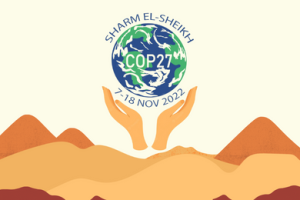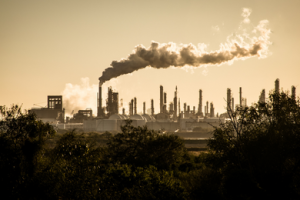Sustainable development goal 13 is “take urgent action to combat climate change and its impacts” or as it is shortened “climate action”1. Starting last Sunday (November 6) and until next Friday (November 18) delegates from different countries and some heads of state are discussing the way forward regarding climate change at the Conference of the Parties (COP) 27 in Sharm el Sheikh, Egypt.
This is an annual meeting convened by the United Nations and “parties” refers “to the 197 nations that agreed to the United Nations Framework Convention on Climate Change in 1992.”2 These “parties”, which include the United States, “ratified the treaty to address ‘dangerous human interference with the climate system’ and stabilize levels of greenhouse gas emissions in the atmosphere.”2

I think that there is hardly any other SDG that exemplifies the One Health approach and philosophy better. Humans, animals, and plants, all share an ecosystem and a climate. Of course, there are specificities of different habitats, and, most importantly, animals, plants, and humans have different capacities and capabilities to confront changes in climate, the differences can be found both between these groups and within them. Nonetheless, we are all affected, be it through floods, droughts, heatwaves, etc., by rising temperatures. Therefore, the solution to this problem must come from a holistic mindset and a collective effort, that not only considers the different hosts of this planet and different disciplines, but also different countries, cultures, and economic development levels.

The abrupt changes brought by the COVID-19 pandemic had some silver linings in the realm of climate change initially and demonstrated that humans could co-exist with nature in a different manner. For example, there was ca. a 40% decrease in certain harmful gases in the atmosphere over China between February 2019 and 2020. Unfortunately, by February 2021, the concentrations returned to pre-pandemic or even higher levels3. The list and enormity of the devasting consequences linked to climate change are so great that it is difficult to do them justice in this blog post. At this point in time, I think that the most important word in this SDG is “action”.
We will all be anxiously awaiting the results of this year’s COP, and, most importantly, to see how the words contained in the agreements reached spring into action, as, according to the UN “our window to avoid climate catastrophe is closing rapidly”1. The energy crisis brought by the war in Ukraine, staggering inflation, and the COVID-19 pandemic, among many other shocks, like the floods in Pakistan, should act as catalyzers for a profound and significant paradigm shift to how we manage our lives toward a kinder to all, more resilient, and sustainable economy.
By: Olga Muñoz PhD | Adjunct Assistant Professor
References
1. United Nations Department of Economic and Social Affairs; Sustainable Development. Sustainable development goal 13.
2. Friedman L. What Is COP27? And Other Questions About the Big U.N. Climate Summit. The New York Times. 2022.
3. The European Space Agency. Air pollution returning to pre-COVID levels. https://www.esa.int/Applications/Observing_the_Earth/Copernicus/Sentinel-5P/Air_pollution_returning_to_pre-COVID_levels. Published 2021.
Source: UF/IFAS Pest Alert
Note: All images and contents are the property of UF/IFAS.



